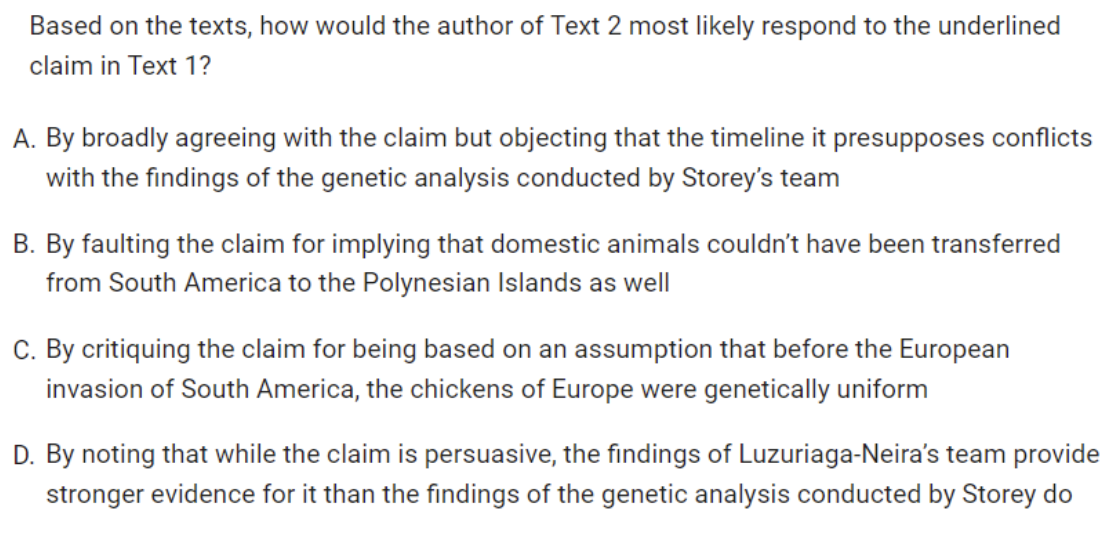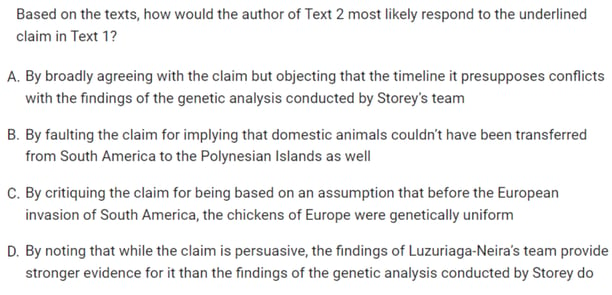
If you've found this article, you might have heard the term SAT Verbal. It's an older, outdated term to describe the SAT Reading and Writing section. However, the content of the SAT Verbal section is still very important today.
Many of the topics and skills from what used to be known as SAT Verbal are now tested in the SAT Reading and Writing section. To do well on the Reading and Writing section, you need to understand what SAT Verbal is, what types of skills it tests, and how to practice it.
What Is SAT Verbal?
SAT Verbal was the traditional term for the SAT Reading section. Before 2005, the SAT had only two sections: Verbal and Math. The sections were each scored on a scale of 200-800, and your composite SAT score ranged from 400-1600. Then, from 2005-2015, the SAT had three sections: Critical Reading, Math, and Writing. The Critical Reading Section was nearly the same as the pre-2005 SAT Verbal section, but analogy questions were eliminated.
In 2016, the College Board reverted to the old two-section system with scaled composite scores ranging from 400-1600. However, the two sections weren’t Math and Verbal, but Math and Evidence-Based Reading and Writing.
Most recently, the SAT transitioned to a fully digital format in 2024. The digital SAT keeps the two-section system, but calls them Reading and Writing and Math. While the digital SAT tests students on the same skills as the 2016 paper-based SAT, the exam is shorter with fewer questions. The biggest differences appear in the Reading and Writing section, which uses shorter reading passages of 25-150 words that are paired with just one question instead of a set.
What Verbal SAT Skills Are Tested on the Digital SAT?
As I said before, the only part of the SAT verbal remaining in the Reading and Writing section is passage-based reading questions. The digital SAT’s passage-based reading questions ask you questions related to the following subject areas:
- Literature
- History/social studies
- The humanities
- Science
After reading each passage, you’ll be asked a single question. The types of questions that you’ll be asked fall into eight categories (each utilizing a slightly different skill). The first six skills were required for the Critical Reading section on the old SAT. Skills 7 and 8 are new.
Because the digital SAT tests your reading and writing skills in the same section, figuring out which questions are reading-based versus writing-based can be a bit tricky. Since we’re focusing on questions that test your reading skills here, all the question types included below are reading-based! You can learn more about the types of writing questions that appear on the digital SAT here.
#1: Identify the Meaning of Words and Phrases in Context
These questions ask you to identify what a word means in the context of the passage. Sometimes, the word you’re asked about is common (not a very rare word like the old sentence completion words), though these common words are typically being used in an uncommon way in the passage. For example, the word may have multiple meanings and the less common meaning is being tested.
Sample Question
In line 88, "adhere" most nearly means
- to stick to a surface
- to believe in
- to preach
- to run away
#2: Recognize the Big Picture / Main Idea of the Passage
These questions will ask you about the overall purpose of the passage. Is the passage meant to inform, review, contradict, prove, parody, hypothesize?
Sample Question
The primary purpose of the passage is to
- inform the public about a discovery
- review a work of art
- parody a well-known poem
- contradict a common claim
 Can you sift through the clutter?
Can you sift through the clutter?
#3: Recognize the Purpose of Key Details in the Passage
These questions usually refer to a specific line and ask you about a detail from that line. They may also ask what a phrase or paragraph is accomplishing in the context of the whole passage.
Sample Question
Which best describes the function of the statement in lines 47-48 ("To...final")?
- It summarizes the points made in the preceding paragraph.
- It provides support for the argument made in the first paragraph.
- It shows a surprising realization.
- It contrasts recent scientific findings.
#4: Infer the Meaning of a Line, Paragraph, or Entire Passage
These questions ask you to interpret the meaning of a line, a paragraph, or the whole passage. That may sound difficult, but don’t worry. These won't be asking for your subjective interpretation. There will always be only one correct answer to these questions.
Sample Question
The author of this passage would likely agree with which of the following statements about the "Dali" referred to in line 2?
- He should be more criticized.
- He was ahead of his time.
- He should be more widely known.
- He revolutionized modern art.
#5: State the Function / Purpose of a Sentence in the Passage
These questions ask you to identify what effect a phrase or sentence has in the passage.
Sample Question
In lines 7, the author refers to his “scared smile” primarily to
- imply that Gerald had no feelings towards Ophelia.
- suggest that Gerald is excessively concerned about appearances.
- illustrate some of the exaggerated claims made Gerald’s uncle.
- emphasize the Gerald’s cowardice.
#6: Interpret Data / Use Scientific Reasoning Skills (New Skill for 2016 SAT)
For these questions, you will be asked to interpret graphs or charts and choose which fact they best support or least support. You don't need to be a science or data expert to answer these questions correctly, but you’ll need to be proficient at reading and interpreting graphs and charts. Look at our ACT science articles for assistance with this skill as ACT science relies on the same skill.
#7: Provide Evidence Support
These questions ask you to identify exactly where in the passage you found your evidence to answer the first question.
#8: Analyze Multiple Texts
These questions provide two short texts side by side and ask you to think about how they can be used to respond to or critique each other.
For instance, the sample question below asks you to describe how the author of the second text would respond to the underlined claim in the first text. You’ll have to use your synthesizing and critical reading skills to find the correct answer (it’s D!).
Sample Question

#8: Analyze Text Structure and Purpose
This question type asks you to read a short passage and correctly identify its core purpose. These questions require you to analyze the meaning and ideas within a text and eliminate answer choices that discuss ideas that don’t appear in the text or that mischaracterize the text’s purpose.
Sample Question

How to Practice
Your first step in your SAT Verbal practice should be to learn the test format and strategies, so you’re not surprised the day of the test. One great way to do that is looking at study guides that focus on the SAT verbal exam.
After acquiring this knowledge, you need to start taking SAT practice tests, if you haven’t already. Check out the best SAT reading comprehension practice tests and questions. Make sure to do an in-depth review after completing each practice test. Review is the most important step in your study process. You need to identify what mistakes you’re making, so you don’t make them the day of the test.
Following these steps will put you well on your way to raising your verbal SAT score!
What’s Next?
If you're taking the SAT, you should learn about the format of the new SAT, and also, check out some general tips on how to prepare for the SAT.
Before you start studying for the SAT, figure out what’s a good score for your target college.














